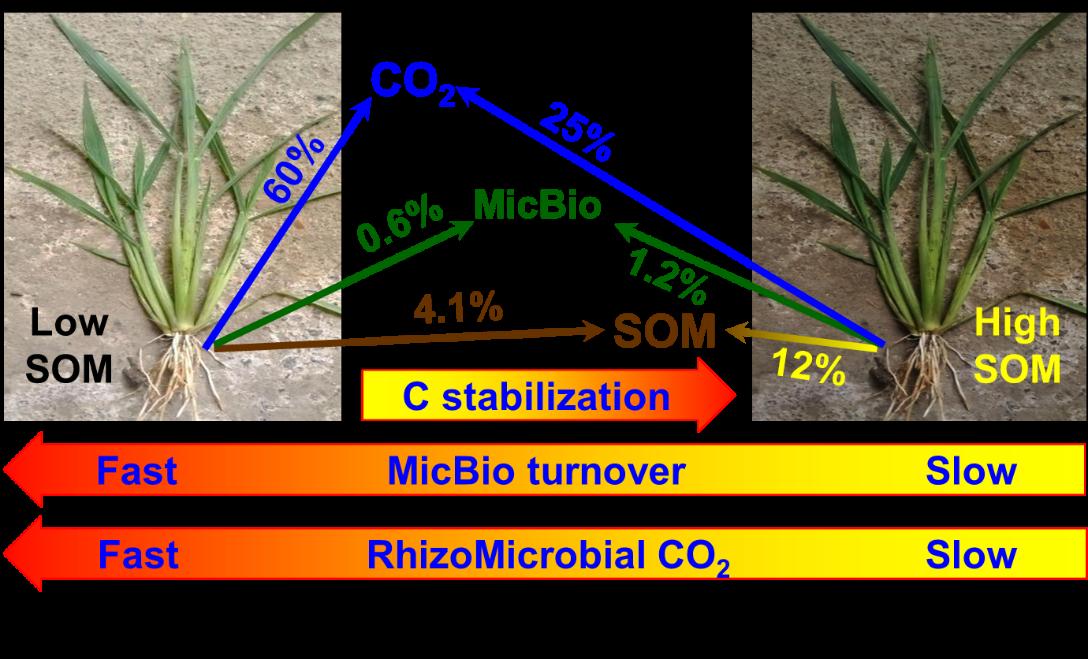
Paddy soil has been proposed as playing an important role in mitigating the increase of atmospheric CO2. Thus, there is a fundamental need to gain more information on the enhancing C sequestration and stabilization in paddy soil.
The organic C content of paddy soils varies geographically across subtropical China, ranging from 0.51 to 5.03%, which is largely attributed to plant C input. Rice may play a key role in the contribution of the root-derived substances to SOC pools in paddy ecosystems. However, information on the fate of the root-deposited photosynthates in soils differing in SOC content, especially in paddy soils, and the importance of rhizodeposits for the production and stabilization of SOM in these soils remain to be determined.
Therefore, the research group from the Institute of Subtropical Agriculture (ISA) of the Chinese Academy of Sciences studied the effects of SOC contents on the allocation and dynamics of assimilates by labeling rice with 13CO2 at the rapid root growth stage (tillering stage) and harvested six times within 30 days under controlled laboratory condition. The objectives of this study were to determine the allocation and dynamics of new assimilates among pools within the rice-soil systems, and evaluate amounts of C transferred by rice belowground and rhizodeposition under a series of three paddy soils differing widely in SOC content.
The researchers found that SOC contents significant affected the newly photosynthetic C allocation and dynamics within the rice-soil system. More photosynthetic C remained in shoots in low-SOC soils. Higher photosynthetic C was released from roots into soil and lower for respiration loss in high-SOC soils. Therefore, high-SOC soils increased both the amount and proportion of C transferred remaining belowground as rice rhizodepositon (it called matthew effect).
They also found that the turnover of rice rhizodepositon C is probably dependent on mineral-associated organic matter, indicating that a certain content of SOM in fine texture soils may be able to preserve the root-derived C against microbial degradation. The rice rhizodepositon C during growth could have a larger contribution to soil C sequestration in high- than low-SOC soils. They also mentioned that this was a short experiment and a longer sampling period may have revealed greater contributions of recently produced photosynthetic carbon to soil microbes and C sequestration.
This study entitled "Photosynthetic carbon allocation and dynamics in rice-soil systems depends on soil organic carbon content" has been online in Plant and Soil (DOI: 10.1007/s11104-016-3005-z). The full-text can be download at http://link.springer.com/article/10.1007/s11104-016-3005-z.
This study was supported financially by the National Natural Science Foundation of China (41522107; 41501321), the Strategic Priority Research Program of the Chinese Academy of Sciences (XDB15020401).

Carbon Allocation by Rice Depending on SOM Content (Image by ISA)

86-10-68597521 (day)
86-10-68597289 (night)

52 Sanlihe Rd., Xicheng District,
Beijing, China (100864)

